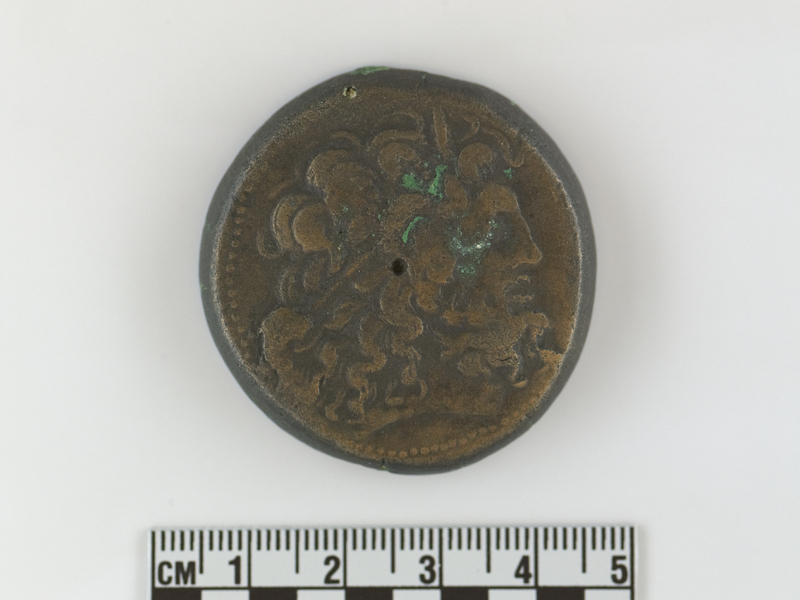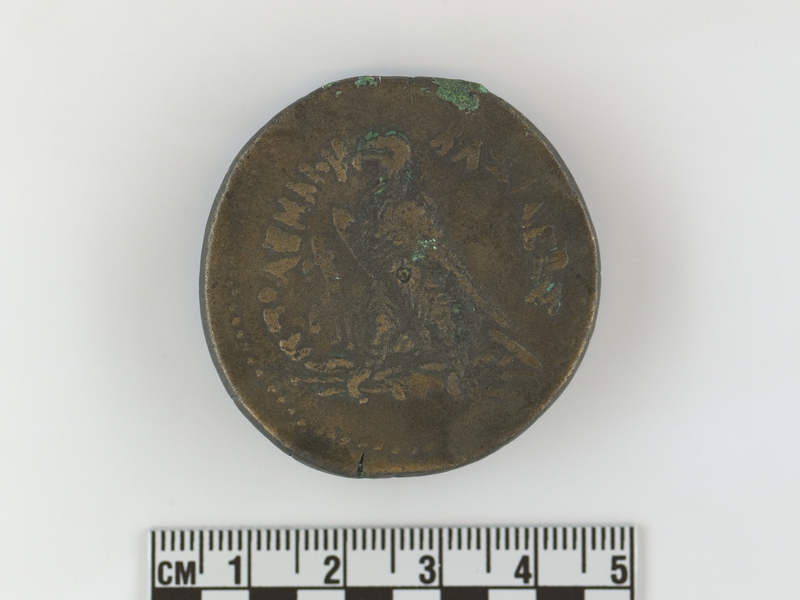Coin Item Number: 3206/3 from the MOA: University of British Columbia


Description
Egyptian drachm coin of Ptolemy III, 246-221 BCE. Obverse: large head of Zeus Ammon, facing right, with curly hair. Reverse: large eagle, facing left, standing on a thunderbolt; to left, a cornucopia; to left, inscription ‘πTOΛEMAIoV’; to right, ‘RAΣIΛEΩΣ’. Coin is very heavy.
History Of Use
Text tentatively translates to "Coin of Ptolemy the King". Bronze coinage such as this was a low-value currency used for small-scale transactions, wages, and taxes. This particular coin was part of the Series V issue, minted during the reign of Ptolemy III Euergetes as a standardized and wear-resistant currency. The Ptolemaic pharaohs minted a vast amount of these coins, and demanded more taxes in the form of coin, in order to exert greater state control over the countryside; making coins symbols of royal authority. By drastically increasing the use of coins minted in the capital of Alexandria, they hoped to increase ties between the central government and rural villages. This was partially successful as currency was dominant in royal accounting and among urban elites, but its use in rural areas was much more inconsistent, with many villagers preferring to barter goods.
Iconographic Meaning
The symbols on coins presented the Ptolemies as rightful, pious kings. Bronze coins like this one typically blended Greek and Egyptian mythology; the god Zeus-Ammon is depicted on the observe side of this coin, a combination of the Greek god Zeus and Egpytian god Amun. The cornucopia was a symbol of plenty and prosperity in both Greek and Egyptian.
Item History
- Made in Alexandria, Egypt ? between 247 BCE and 222 BCE
- Owned by David Cunningham before October 27, 2016
- Received from David Cunningham (Donor) on October 27, 2016
What
- Name
- Coin
- Identification Number
- 3206/3
- Type of Item
- coin
- Material
- bronze metal
- Overall
- height 0.6 cm, diameter 4.1 cm
Who
- Culture
- Egyptian
- Previous Owner
- David Cunningham
- Received from
- David Cunningham (Donor)
Where
- Holding Institution
- MOA: University of British Columbia
- Made in
- Alexandria, Egypt ?
When
- Creation Date
- between 247 BCE and 222 BCE
- Ownership Date
- before October 27, 2016
- Acquisition Date
- on October 27, 2016
Other
- Item Classes
- metalwork
- Condition
- good
- Accession Number
- 3206/0003